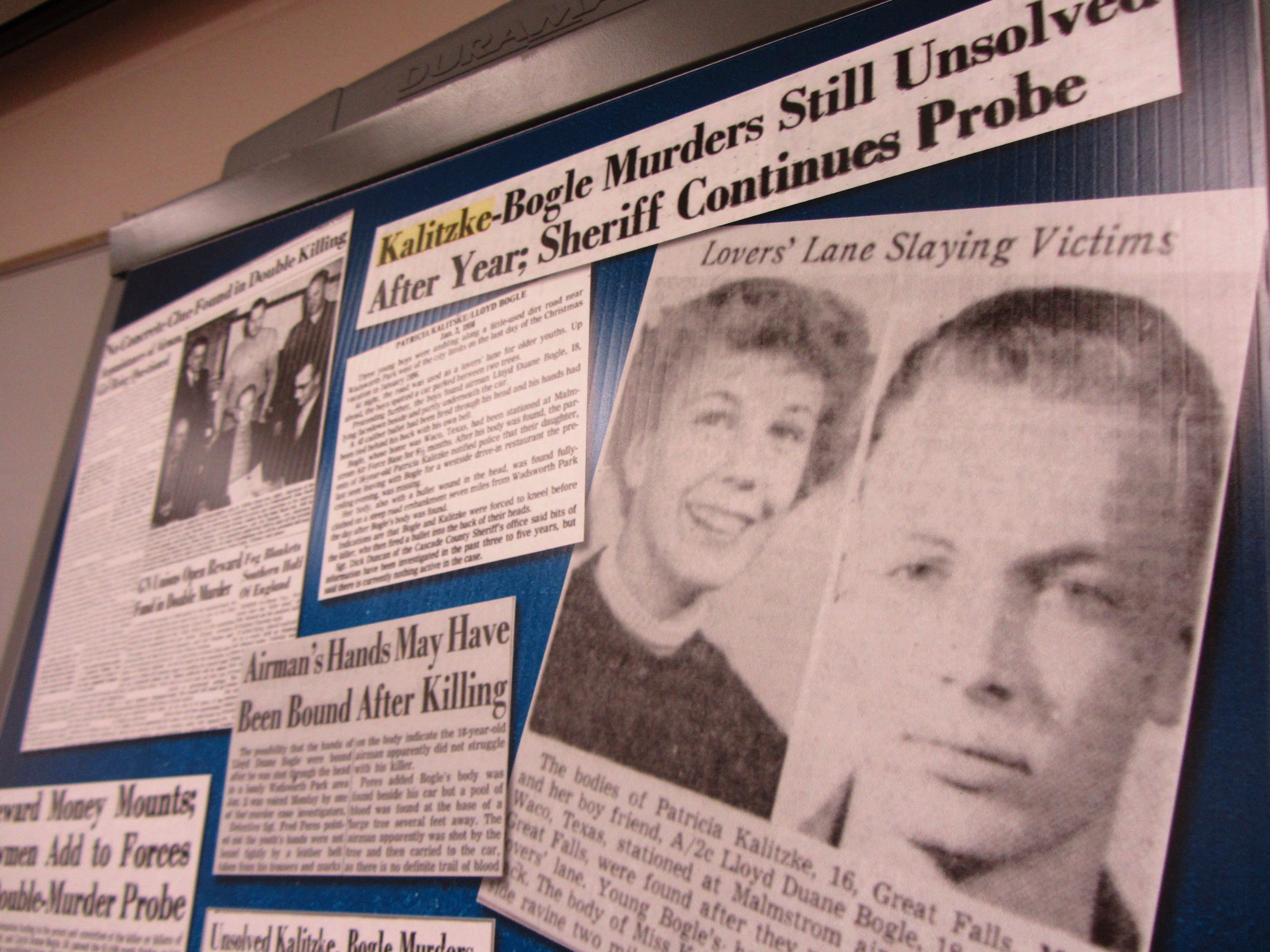DNA, forensic genealogy close 65-year-old double homicide
Investigators in Montana says evidence preserved on a microscope slide after a 1956 double homicide helped them close the books on the 65-year-old case

Your support helps us to tell the story
From reproductive rights to climate change to Big Tech, The Independent is on the ground when the story is developing. Whether it's investigating the financials of Elon Musk's pro-Trump PAC or producing our latest documentary, 'The A Word', which shines a light on the American women fighting for reproductive rights, we know how important it is to parse out the facts from the messaging.
At such a critical moment in US history, we need reporters on the ground. Your donation allows us to keep sending journalists to speak to both sides of the story.
The Independent is trusted by Americans across the entire political spectrum. And unlike many other quality news outlets, we choose not to lock Americans out of our reporting and analysis with paywalls. We believe quality journalism should be available to everyone, paid for by those who can afford it.
Your support makes all the difference.DNA evidence preserved after a 1956 double homicide and the use of forensic genealogy has helped a Montana sheriff’s office close the books on the 65-year-old cold case, officials said.
Investigators with the Cascade County Sheriff’s Office concluded Kenneth Gould — who died in Oregon County, Missouri in 2007 — more than likely killed Patricia Kalitzke, 16, and Duane Bogle, 18, the Great Falls Tribune reports. Both were shot in the head.
Detective Sgt. Jon Kadner, who took over the case in 2012, said Tuesday it was the oldest case he could find nationwide that has been solved using forensic genealogy, which searches commercial DNA databases to find familial matches to the DNA of a crime suspect.
On Jan. 3, 1956, three boys hiking along the Sun River near Wadsworth Park northwest of Great Falls found Bogle dead near his car. A day later, a county road worker found Kalitzke’s body north of Great Falls.
Kalitzke was a junior at Great Falls High School, and Bogle was an airman at Malmstrom Air Force Base from Waco Texas
Officers investigated for years, but they were unable to make an arrest.
The case went cold for decades until 2001, when then-Detective Phil Matteson sent the slide of a vaginal swab gathered from Kalitzke’s body to the Montana State Crime Lab for analysis. The lab found a sperm cell that did not belong to Bogle, officers said.
In the following years, law enforcement compared the DNA sample to about 35 other men, including gangster James Joseph “Whitey” Bulger Jr. They were all ruled out as suspects.
When Matteson retired, he said he didn’t believe the case would be solved. “A lot of different people had a turn at this, and we just weren’t able to take it to conclusion,” he said.
In 2018, however, forensic genealogy, which was used to help adoptees find biological family members, was used to identify Joseph James DeAngelo Jr. as the Golden State Killer. The new method has led to the identification of dozens of suspects in cold cases.
In 2019, Cascade County detectives had Bode Technology perform additional DNA testing on the evidence found on Kalitzke’s body. It was uploaded to voluntary genealogical databases, where they discovered a possible family connection — leading investigators to Gould.
Kadner had to reach out to Gould’s children and ask for DNA samples to verify the match.
“I wasn’t sure how they were going to react when I come to them saying, ‘Hey your dad’s a suspect in this case,’ but they were great to work with,” Kadner said.
Gould’s family home at the time of the homicides was a little over a mile (1.6 kilometers) from where Kalitzke lived. He was known to ride horses through the area, officials said.
After the murders, Gould sold his property near the town of Tracy. His family lived in the Montana communities of Geraldine and Hamilton before moving to Missouri in 1967. They did not return to Montana.
Gould did not have a known criminal history and was not interviewed during the murder investigation. Investigators did not find any connections between Gould and the victims.
Officers kept working the case because of the circumstances, Kadner said.
“You had two young, vibrant individuals that were well-liked among their peer group,” he said. “Investigators poured their heart and soul into this case. They leave a little bit of themselves, from what I’ve seen.”